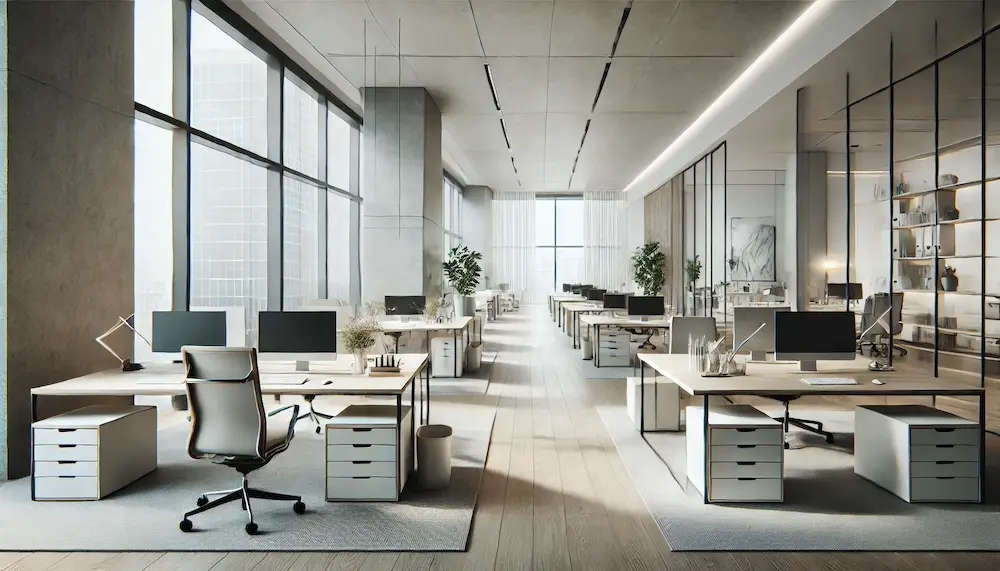Modern minimalist office design emphasizes simplicity, functionality, and a clutter-free environment, creating a workspace that enhances productivity and fosters a sense of calm.
History and Origins of Modern Minimalist Office Design
The minimalist design movement emerged in the mid-20th century as a reaction against the ornate styles of previous eras. Influenced by Japanese Zen philosophy and the Bauhaus movement, it emphasizes the idea that “less is more,” focusing on essential elements and eliminating unnecessary details. In office design, this translates to functional workspaces that are free from distractions, promoting efficiency and clarity.
Key Features of Modern Minimalist Office Design
- Clean Lines and Simple Forms: Furniture and architectural elements feature straight lines and geometric shapes, contributing to a sleek and uncluttered appearance.
- Neutral Color Palettes: Utilizing shades of white, gray, and black, often complemented by natural wood tones, to create a calm and cohesive environment.
- Functional Furniture: Prioritizing pieces that serve a clear purpose, often incorporating ergonomic designs to enhance comfort and productivity.
- Clutter-Free Spaces: Emphasizing storage solutions that keep the workspace tidy, such as built-in cabinets and concealed wiring, to maintain a clean aesthetic.
- Natural Light: Maximizing the use of natural light through large windows and open layouts to create an airy and inviting atmosphere.
Applications of Modern Minimalist Office Design
This design approach is versatile and can be applied to various office settings:
- Home Offices: Creating a serene workspace at home by incorporating minimalist furniture and decor, enhancing focus and reducing distractions.
- Corporate Environments: Designing open-plan offices with minimalist principles to encourage collaboration while maintaining an organized and efficient workspace.
- Creative Studios: Providing a blank canvas that fosters creativity, allowing professionals to concentrate on their work without visual clutter.
Considerations When Choosing Modern Minimalist Office Design
- Space Planning: Assessing the available space to ensure that the minimalist design enhances functionality without making the area feel sparse or uninviting.
- Quality Over Quantity: Investing in high-quality, multifunctional furniture pieces that offer durability and align with minimalist aesthetics.
- Personalization: Incorporating personal touches, such as select artwork or plants, to add warmth and character without compromising the minimalist ethos.
- Maintenance: Committing to regular decluttering and organization to preserve the minimalist environment and prevent the accumulation of unnecessary items.
Conclusion
Modern minimalist office design offers a streamlined and efficient workspace that can enhance productivity and well-being. By focusing on simplicity, functionality, and intentional design choices, it creates an environment where individuals can work effectively and comfortably.
